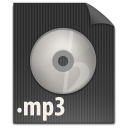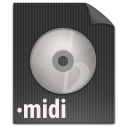Hellfire Mantle - Touhou
- Author
- NoOneLaysHere
- Type
- Grand Illusions 30
- Created
- 03/09/2017 23:54
- Cloned from
- Hellfire Mantle - Touhou - R.H. only
- BPM
- 92
- Length
- 704
Transcribed onto a 30-note music-box, and transposed such that D becomes E, and A becomes B, etc.. The L.H. plays two octaves higher. The actual tempo should be 184. Instead, it's played at 92 bpm with half distance between beats. The actual time signature switches between 5/4 to 3/4. Displaying at 3/4 has the 3/4 sections be shown off by a quarter note, so instead I select the 4/4 rhythm, so as to have the beginning of each measure align a fifth or a third of the time (depending on the playing time signature). (This only matters when punching the holes in, if at all.)
There are some G6 notes that can't be played. They are instead played as B♭5/A♯5. For the L.H., the E♭4/D♯4 notes can't be played. Instead, G4 will be played for those notes. This unfortunately changes the pattern the L.H. plays by quite a bit.
Hole punch paper strips Export
Yay! It looks like this melody can be played offline on a 30 note paper strip music box!
All you need to do is:
- Get a 30 note DIY Music Box Kit from our online store page if you don't have one
- Export the melody to PDF with paper strips, print it out and cut with scissors. Make sure to use the right paper size and set you printer scale to 100%, otherwise the size won't match. It's better when paper strips are thick, so if you are going to use thin office paper, we recommend you to glue two or three layers together. Another option is to laminate paper strips with a transparent duct tape
- Punch holes with a tool from the music box kit
- Enjoy your favorite melody playing on a real music box!
Grand Illusions 30 music boxes More
Similar melodies More
Transcribed onto a 30-note music-box, and transposed such that D becomes E, and A becomes B, etc.. The actual tempo should be 184. Instead, it's played at 92 bpm with half distance between beats. The actual time signature switches between 5/4 to 3/4. Displaying at 3/4 has the 3/4 sections be shown off by a quarter note, so instead I select the 4/4 rhythm, so as to have the beginning of each measure align a fifth or a third of the time (depending on the playing time signature). (This only matters when punching the holes in, if at all.) There are some G6 notes that can't be played. They are instead played as B♭5/A♯5.










Comments Subscribe